Reflections on Long Island Part Three of Four
Several weeks ago, I joined up with nearly 100 of my golf course architect friends from Europe, Australia and the US for five days of golf, architectural study and camaraderie on some of our country’s finest venues. Our destination: Long Island, NY.
Day three found us at Maidstone Club, again on the east end of Long Island. Maidstone opened in 1891 as a tennis and swimming club and then added a three-hole golf course in 1894. Willie Tucker then created a nine-hole course, which was again expanded in 1938 when the club acquired more land. This course was designed by Willie Park, Jr. and features a stretch of links holes among the sand dunes along the Atlantic that spark images of Troon and Ballybunion.
Above left and right, two of Maidstone's "links" holes, including the challenging par four 9th and the picturesque par three 14th. The Atlantic hugs both holes on the right side.
I found the course to be incredibly diverse, not only in the setting but also in the way Park used the attributes of the site to create a unique and varied sequence of holes. Like the National, I also found Maidstone to be quite memorable, start to finish, which is always a mark of a well-designed course. Some holes were very traditional, such as the starting and finishing holes. There were also holes that related very intimately and strategically with Hook Pond… and then the fabulous links holes among the sand dunes. The sequencing was quite varied, as the use of the ocean was random…not all at once – the same maybe said of the pond. Those experiences were all fittingly broken up during the round.
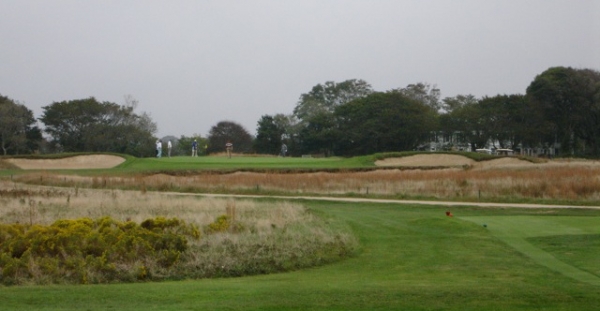
The par three 12th, low profile and understated, and with a myriad of textures and colors in the frame.
The other thing I liked about the course was its playability. Everything was rather simple and straightforward (with maybe the exception of the partially obscured par three 8th). But that hole was indeed a treat to play! And the bunkering – used minimally, but placed purposefully. The forms and features were low profile and naturally appearaing, nothing that would alarm a purist. Plenty of meat on the bone for a good player (especially with the presence of wind), but nothing that was unmanageable for an average player’s skills. A few of the forced carries might creep on one's game if the wind is up - but on a calm day like the one we enjoyed, they were not much of a threat. And of those longer carries, they seemed to be varied in direction and angle.
View from the tee on the partially obscurred par three 8th hole. The green (the green sliver in the center of the oicture) sets within a hollow in the dunes. Fascinatingly fun to play and plenty of bail-out to the left.
Also of note is the fact that Maidstone, to this day, still has no fairway irrigation. Rumor has it that this era will be ending soon, which will be sort of a happy/sad day, depending on who you are talking with…. Nonetheless, it was intriguing to play a highly rated golf course whose conditions were at the mercy of Mother Nature. The turf was nowhere near perfect, but it was acceptable and suitable to the setting – it worked just fine. It will be interesting to see what Messrs. Coore & Crenshaw choose to do as they move forward with their consultations with the course. Extensions of the green surfaces seemed to be of immediate priority, as those lines had been noticeably marked during our visit.
Overall, I enjoyed the day immensely… and played well enough to make triple bogey my final hole and still shoot 81 (bummer ending, but it was the Indian, not the arrow!). Our group was a joy, joined by Rick Elyea (Grass Man), Forrest Richardson from Arizona and also Graham Papworth, the current President of the Society of Australian Golf Course Architects. We shared many laughs….a number at my expense and that of our 6’8” caddie (who was great, by the way!).
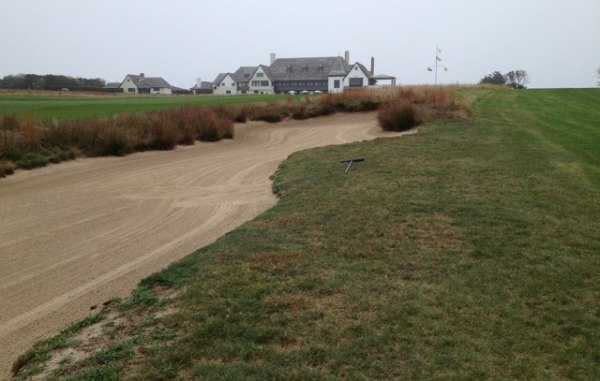
Walking up the 18th with the clubhouse and ocean in the background - more of a traditional look.
Maidstone really impressed me. It inspired me with its simplicity and with its understated characteristics. It was interesting that we can still appreciate a really great arrangement of holes without being completely swayed by their immaculate condition and over-worked architecture. The holes were simply that good and the experience was a strong and memorable one as a result. Oh, and the old clubhouse was spectacular as well!! A return to Maidstone would be most worthwhile.
For a more complete and colorful account of Maidstone's history and evolution, please enjoy Brian McCallen's Hamptons Magazine article, Maidstone Club's Luxurious Links.

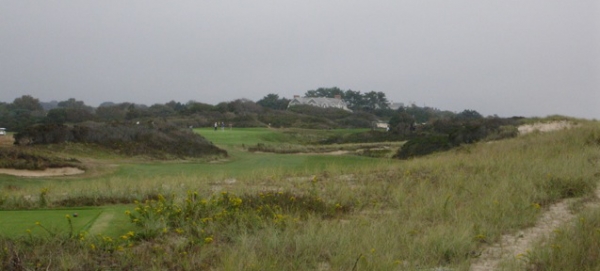
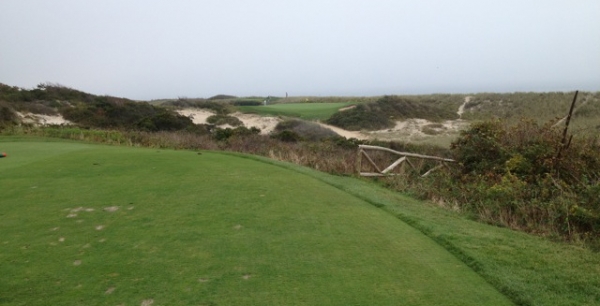
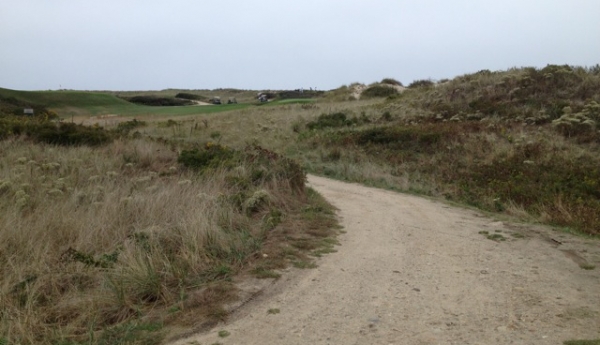
Comments